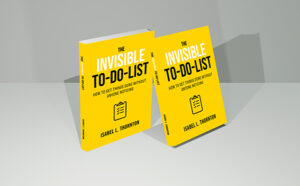Imagine trying to focus while a fire alarm blares, bright lights flash, and someone is constantly tapping your shoulder. For many autistic adults, that’s not a hypothetical—that’s what an average day can feel like. Sensory overload is one of the most significant contributors to autistic burnout, and it’s often misunderstood or minimized.
In Embracing Self-Care for Autistic Burnout: Your comprehensive resource for managing autistic burnout, we take a deep dive into how unmanaged sensory input drains energy, triggers emotional exhaustion, and leads to long-term shutdown. Understanding this connection is crucial for both prevention and recovery.
What Is Sensory Overload?
Sensory overload happens when one or more of the senses is overstimulated beyond what the brain can comfortably process. This can happen due to:
- Bright, flickering lights
- Loud, unpredictable noises
- Strong or unfamiliar smells
- Clothing textures that irritate the skin
- Environments that demand attention to multiple inputs at once
For autistic individuals, sensory thresholds are often lower, which means environments considered “normal” can quickly become overwhelming.
The Link Between Overload and Burnout
Sensory overload may seem like a short-term issue, but its effects are cumulative. If your brain is working overtime every day just to process your surroundings, it leaves little energy for other things—like social interaction, work tasks, or self-care.
Over time, this constant strain on the nervous system leads to:
- Emotional dysregulation
- Shutdown or withdrawal
- Executive dysfunction
- Physical fatigue
- Burnout
“By the time I realized I was burned out, I had been pushing through sensory chaos for years.” – Reader review from Amazon
How to Reduce Sensory Overload in Daily Life
In Embracing Self-Care for Autistic Burnout, we explore a range of practical strategies to reduce daily sensory input. Here are a few you can try today:
1. Create a Sensory-Friendly Environment
- Use soft, dimmable lighting at home
- Choose clothing with familiar, comfortable textures
- Use blackout curtains or white noise machines
2. Use Protective Tools in Public
- Wear noise-canceling headphones
- Carry sunglasses or tinted lenses
- Use aromatherapy with calming scents like lavender (if scent-safe for you)
3. Schedule Recovery Time
After any high-sensory event—like shopping, commuting, or socializing—give yourself intentional quiet time. Even 15–30 minutes of stillness in a low-demand environment can help recalibrate your system.
Empowerment Through Sensory Awareness
You’re not being “too sensitive.” Your nervous system is simply communicating that it’s had enough. Recognizing your personal sensory limits is not a weakness—it’s a strength. It allows you to advocate for the environments and support you need to thrive.
In the book, we provide sensory self-assessment tools and checklists that help readers identify their personal triggers and build protection plans that work.
Start Taking Back Control Today
Sensory overload is a valid and powerful factor in autistic burnout—but it’s one you can address with the right strategies. Embracing Self-Care for Autistic Burnout: Your comprehensive resource for managing autistic burnout gives you the tools, insights, and validation to begin managing overload in your own life.
🟣 Get the book on Amazon
💬 “The sensory strategies changed my life. I finally feel like I have a toolkit, not just survival mode.”
Author

Laura Mitchell writes with a focus on supporting autistic adults and those navigating the challenges of autistic burnout. Drawing on personal experiences and countless conversations within the neurodivergent community, she creates resources that are compassionate, practical, and easy to follow.Her work is grounded in a belief that autistic voices deserve to be heard and understood, and that self-care should be accessible and validating for everyone. Through her books, Laura aims to provide encouragement, clarity, and strategies that help readers build lives that feel sustainable and authentic.When she’s not writing, Laura enjoys quiet routines, creative hobbies, and walking in the hills close to her country home.





